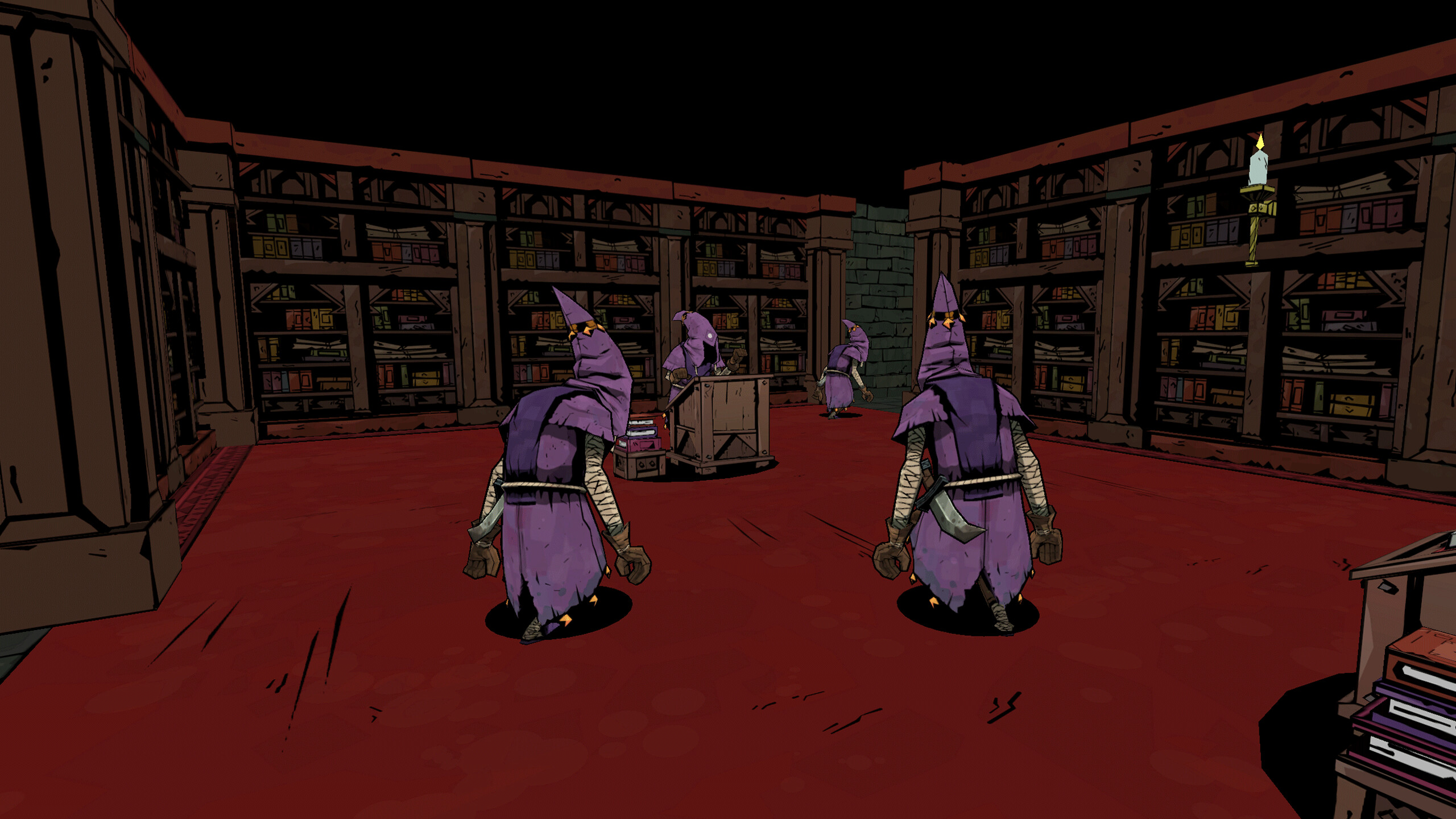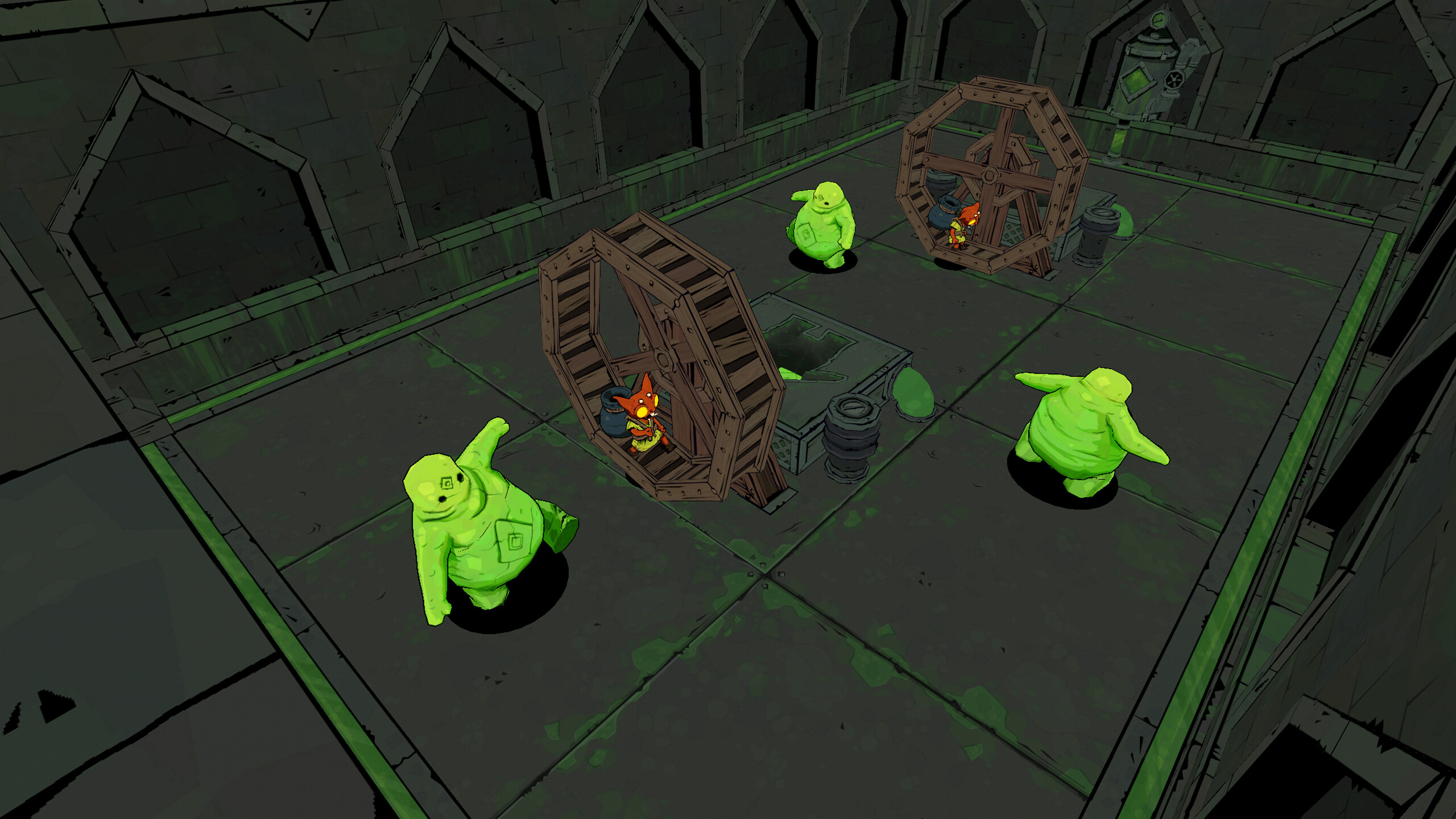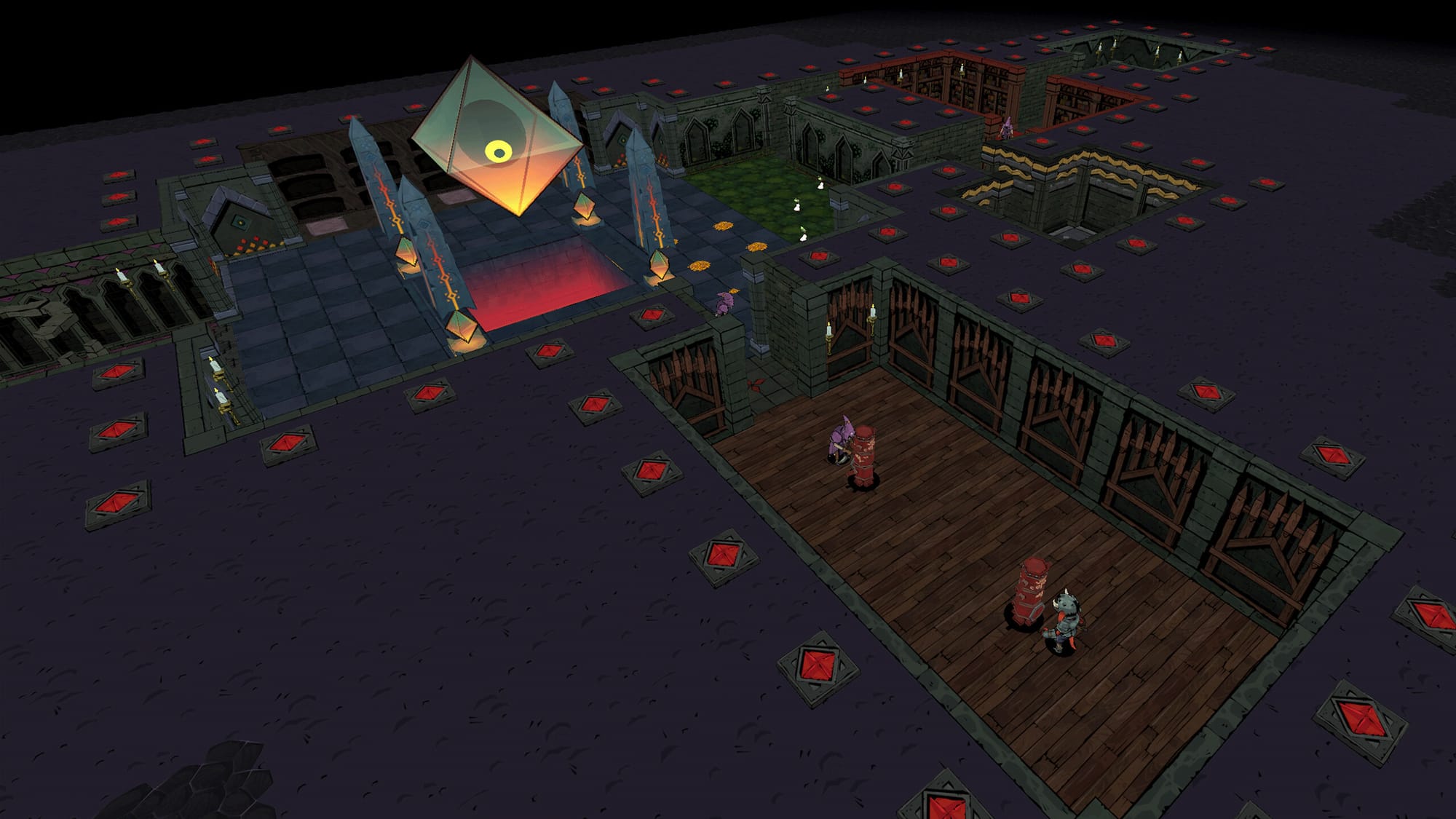Inspired by Dungeon Keeper, Underworld Overseer sees you protecting your lair this year on Quest and PC VR. Read on for our full impressions.
Developed by Myron Games, best known for its VR sandbox god simulator, Deisim, Underworld Overseer shares some similarities but mixes in tactical combat. Playing the powerful god-like Overseer, this villain protagonist adventure tasks you with managing an underground lair and its various minions, protecting your base from invaders across an 18-level campaign.
Following a short demo at GDC 2024, I recently went hands-on with a preview build on Quest 3. An informative tutorial level quickly got me up to speed and that’s helped by Underworld Overseer’s straightforward control scheme – it uses the Touch Controller’s grip button to move position, the left stick for locomotion and the right stick for the snap-turning camera.
So far, I’ve played three levels that took me roughly 20 minutes to clear. Each involved fending off waves of invading humans, some of whom will tunnel towards you if you don’t reach them first. Though I never felt rushed, time isn’t a luxury you have in abundance. A pop-up menu lets you choose your next move by physically pressing the button, which suits the motion controls well.
After choosing the mining tool, you can click on a space and drag it across multiple blocks to quickly signal where you’d like your minions to focus. This approach reduces potential monotony with management and some blocks contain gold, which you can store in designated treasure rooms. You don’t need to hollow out everything, though hidden treasure rooms were a pleasant surprise while expanding my lair.

Once an area was excavated, I began building ‘Work Rooms’ and selecting the tiles you’d like to fill creates them instantly. Though you can summon standard Imps anytime at the cost of mana, building libraries and training rooms summons magical Cultists and melee-focused Warriors, respectively. This leans into the strategy well, since attackers come in many forms.
Of course, your armies can’t survive by constantly doing work. Work Rooms are also complemented by ‘Utility Rooms’ that need less space but cater to more practical requirements. For example, setting up farms ensures your minions don’t go hungry and rest rooms let them sleep. If your army isn’t looked after, this can affect a minion’s effectiveness in protecting your lair.
More tools gradually unlock as time progresses, offering additional ways to stop these enemy waves. Spike traps were particularly fun for any nearby invaders, while alarm traps alert you to approaching enemies. I enjoyed how easy managing units feels, too. I could lay down a banner to rally everyone to a set location, or I could pick up an individual minion and move them across my territory.

Thankfully, you’re also not completely reliant on your minions. Though I only unlocked one during my playthrough, Myron Games confirmed you can use magical attacks like Fireball, Chain Lightning or the Raise Skeleton incantation. Each of these costs mana points that gradually regenerate, so you can’t spam them, but I found Fireballs to be pretty effective in a pinch.
Even though this was an early build with missing elements, Underworld Overseer’s presentation already shows an impressive amount of polish. The cel-shaded visuals look great on Quest 3 for both NPCs and environments, even when you move up close. What I’ve seen so far looks very promising, and I’ll be keeping an eye out for the full release.
Underworld Overseer currently targets a Q4 2024 release window on the Meta Quest platform and Steam.





